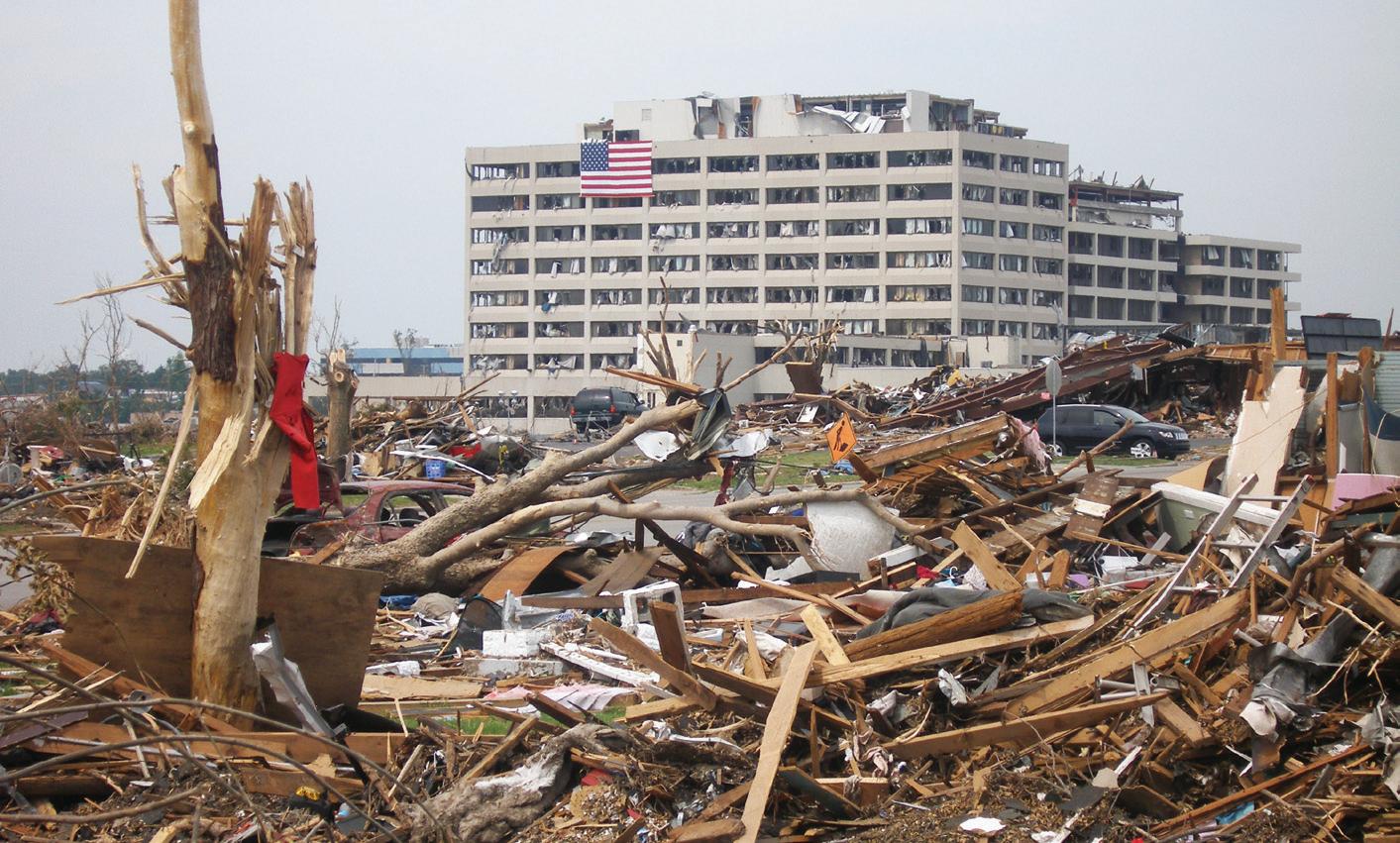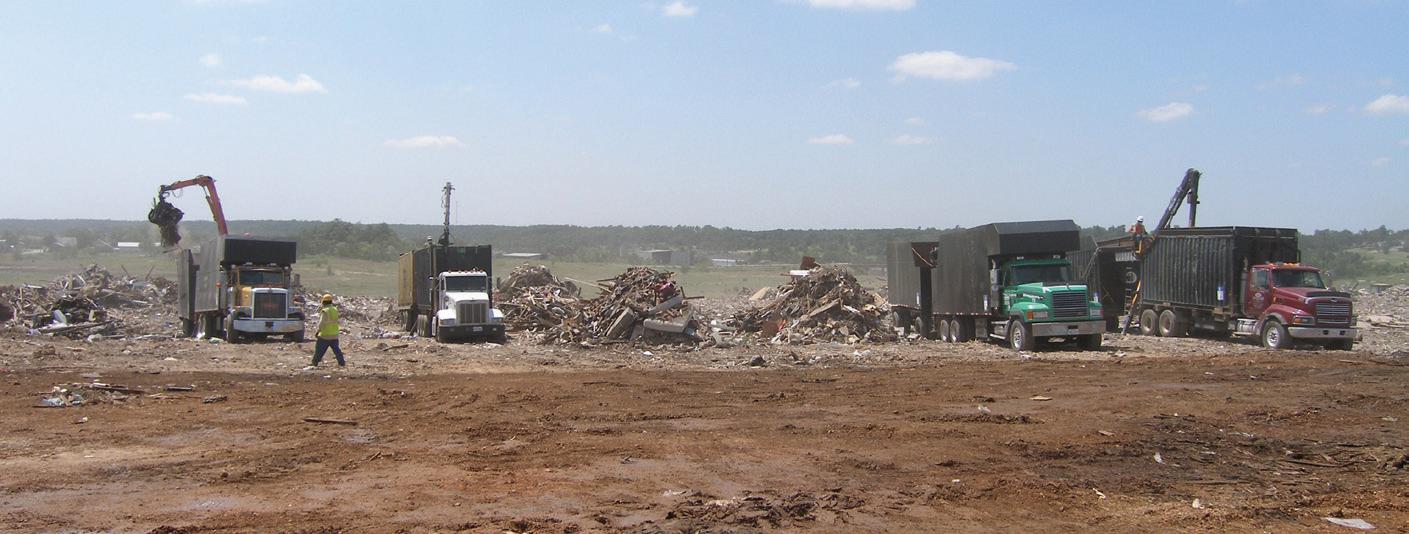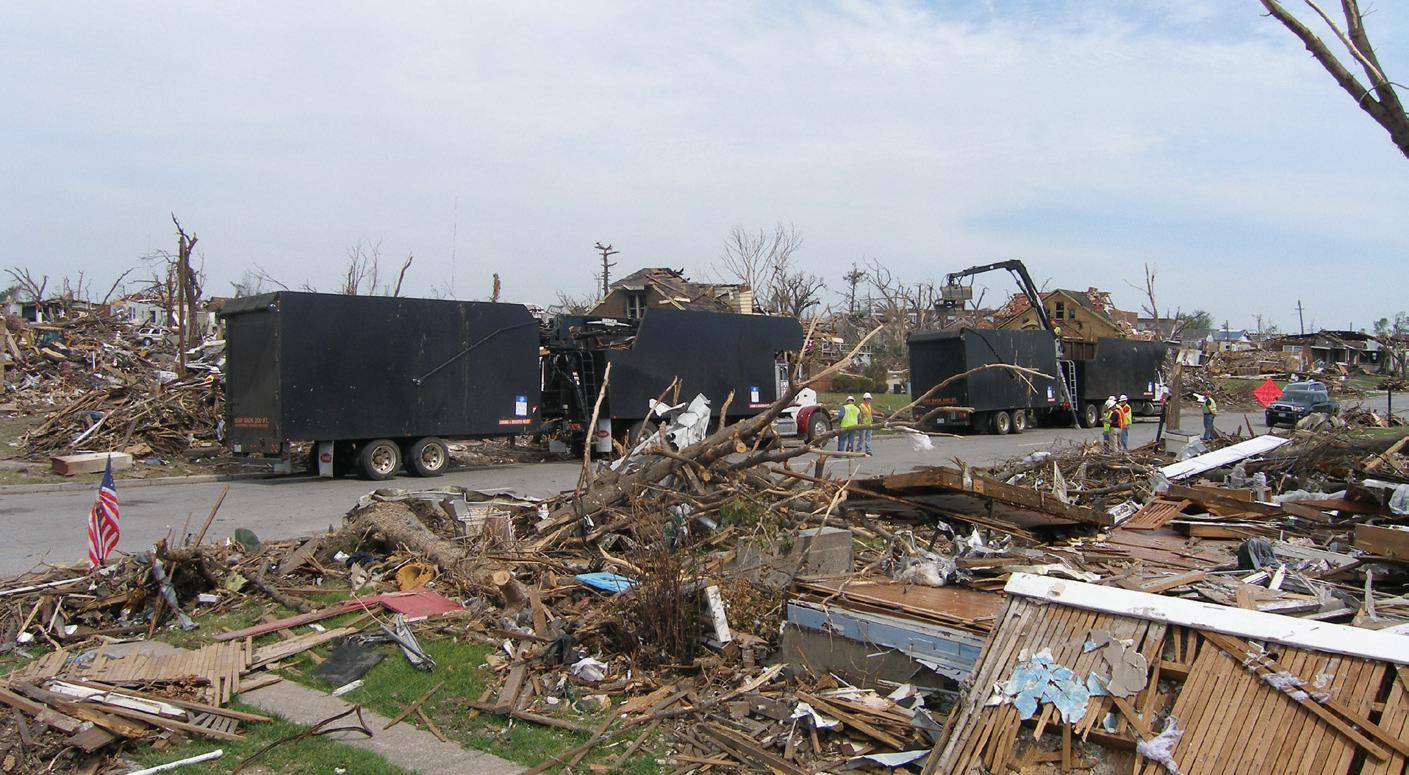
5 minute read
Joplin tornado debris management: lessons learned
Bill Bider
Director, Bureau of Waste Management Kansas Department of Health and Environment Topeka, Kansas
Advertisement
n May 23, 2011, an EF-5 tornado swept through a large section of Joplin, Missouri, killing over 160 people and generating several million cubic yards of debris. Joplin is just across the southeast border of Kansas which is home to several construction and demolition (C&D) waste landfills and one large municipal solid waste (MSW) landfill. Missouri has no C&D landfills in the area and its only MSW landfill in the region is over 40 miles north of Joplin. Within two days, the Kansas facilities were being evaluated by the U.S. Army Corp of Engineers (USACE) tasked with overseeing FEMA’s cleanup effort and they quickly indicated that the Kansas facilities were preferred due to proximity and disposal cost.
My experience with disaster cleanup in the Midwest is that people want to clean up fast and return their communities to normal as soon as possible. Joplin was no different. Within two days, some private cleanup work had already begun and waste started coming to Kansas landfills. This was the start of a complicated process to ensure that Kansas’ facilities were prepared to properly manage the huge tonnage of waste that was about to flow through their gates when the USACE contracts were put into place. A list of issues that needed to get resolved over a period of days and weeks follows:
• Coordination with the USACE and the U.S. EPA to ensure that adequate waste segregation was occurring in Joplin at the point of loading to ensure that unacceptable waste was not delivered to KS C&D landfills (hazardous waste, HHW, e-waste, garbage, white goods, etc.). • Meetings with every potential landfill to discuss operating plan modifications, enhanced waste screening if a C&D landfill, and site modifications to accommodate traffic flow and other needs.
• Coordination with KS local governments to approve of disposal without a permit in accordance with KS emergency provisions including the expansion of one permitted C&D landfill and the utilization of another landfill which was right in the middle of the permitting process when the tornado hit
Joplin. • The establishment of contract operators at two existing C&D landfills to provide capabilities which the landfill permit holders did not have.
• The initiation of a permit transfer at one C&D landfill to reestablish disposal activity where the existing permit holder had begun, but not completed landfill closure. • Review of various proposals to establish emergency unpermitted disposal sites. • Establish a state inspection plan for all landfills receiving Joplin debris.
In addition to the above, the Kansas Department of Health and Environment (KDHE) received numerous questions and complaints from citizens, the media, and elected government officials regarding the management of Joplin debris in Kansas. Some people thought KDHE was being too strict and others thought too lenient. Some companies
St. John’s Mercy Hospital in Joplin sits abandoned and destined for demolition days after the tornado devastated the city.

Tornado debris is off-loaded at the nearby Galena, Kans., construction and demolition landfill.
The USACE oversees debris screening and loading during the first day of debris collection in Joplin.
in-state emergency, except our own Department of Emergency Management was not deployed. KDHE spent thousands of staff hours overseeing all aspects of debris management. Overall, the outcomes were good and the cleanup was completed quickly because regulatory agencies and local government officials worked well together offering flexibility where possible without jeopardizing human health or the environment.
What would KDHE do differently in the future? Not much, but we did learn from this response effort as we always do. I believe we could have done a better job of communicating with the public early in the response effort. It would not have satisfied everyone, but some concerns may have been addressed and perhaps alleviated. We could also have required better storage areas for screened items at the landfills and developed best management practices for dust control that had to be followed right from the start rather than wait until a dust problem was observed. Regardless of these areas of possible improvement, many people worked together to yield an excellent response to a terrible natural disaster.
that operated more distant MSW landfills complained strongly that none of the Joplin debris should be disposed in Kansas’ permitted C&D landfills because they are unlined and groundwater monitoring is not required. Because of these lower landfill standards, KDHE required two levels of waste screening to ensure that hazardous materials were removed from the waste stream. KDHE believes EPA did an excellent job of carrying out the first level of screening in Joplin followed by screening of every load at the landfill by specially trained screeners along with regular checks by third-party engineering consultants to ensure that screening was taking place as required.
Five Kansas landfills were used including one MSW landfill; however, one landfill received the majority of debris. The expanded City of Galena landfill received over 200,000 tons of debris over a three-month period because it was only a few miles from the debris field. This landfill was expanded over an old mined area which had been restricted for other surface uses for many years. Both KDHE and the U.S. EPA knew this site was acceptable because there was no usable groundwater under the landfill area; however, it was close to the town. The summer of 2011 was very hot and dry, and dust was an ongoing problem and concern. KDHE required that special dust control practices be implemented, but it was still difficult to control because the debris arrived at the landfill in a dusty condition. Dust was minimized using several practices including air misters, wetting trucks, and the mixing of wood mulch generated from tree debris with cover soil.
A disaster of this magnitude presents many challenges but also business opportunities. Just considering the amount of debris disposed in Kansas, which was about 300,000 tons over a three-month period, the landfill disposal cost alone was over $6,000,000. In addition, there was money to be made for loading and transporting waste, mulching woody waste, doing engineering consulting, and disposing of, or recycling, diverted material. When this much money is available, people get interested and angry when things do not go their way.
KDHE and the State of Kansas treated the Joplin emergency no different than we would have treated an Bill Bider can be reached at (785) 2961612 or wbider@kdhe.state.ks.us.











